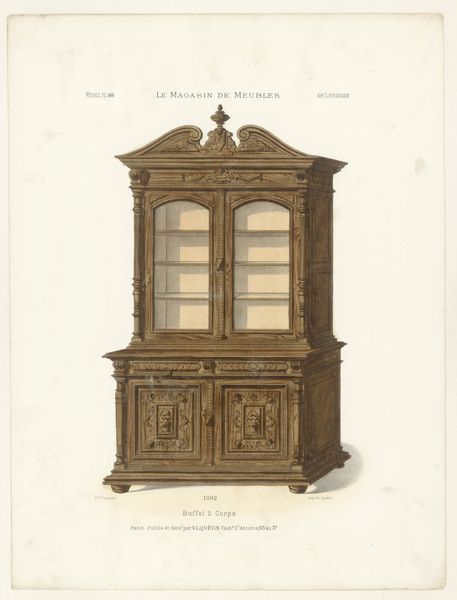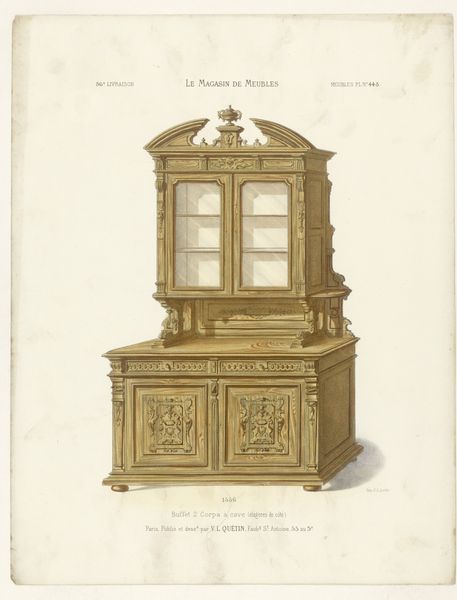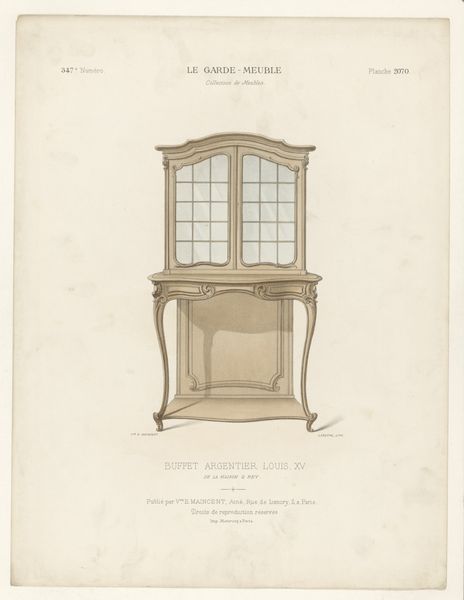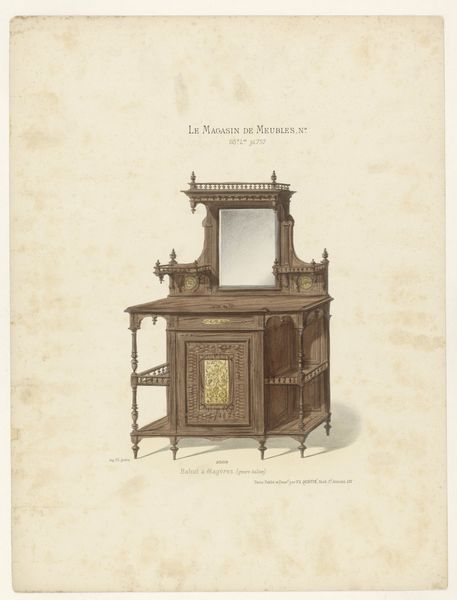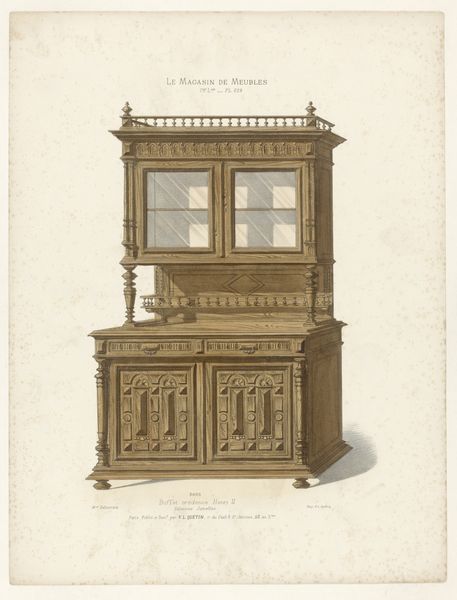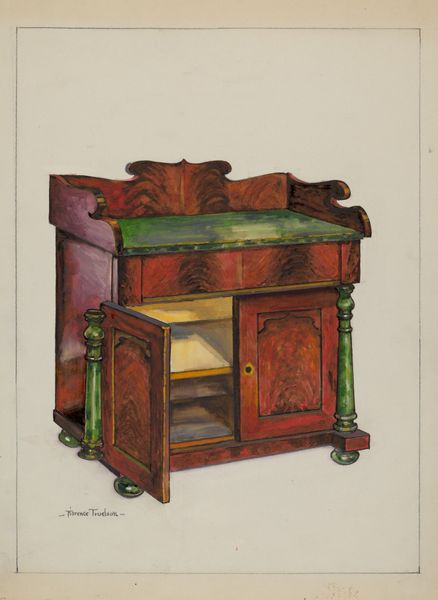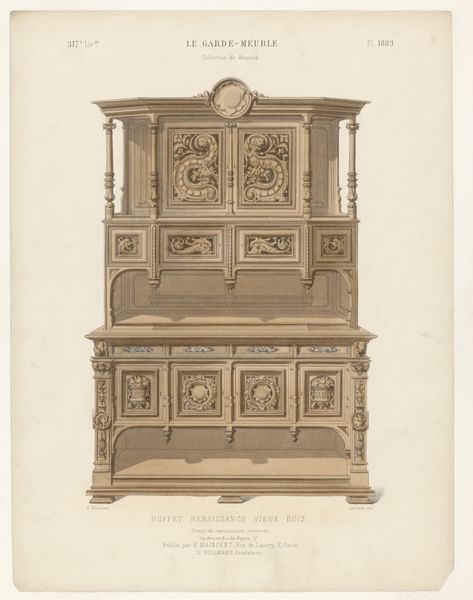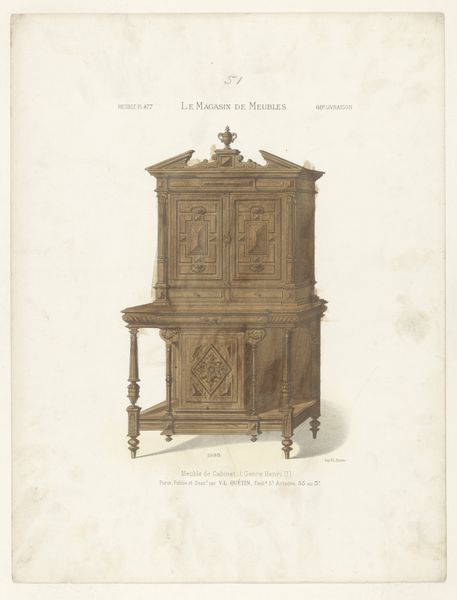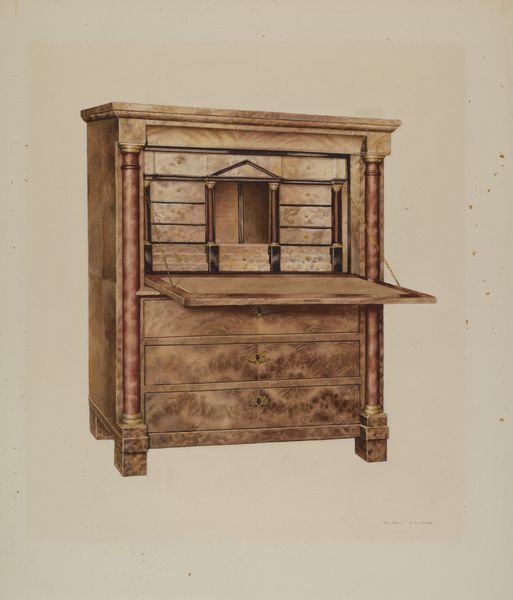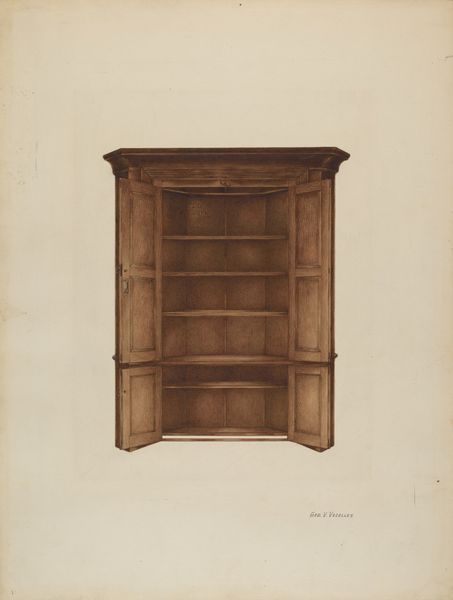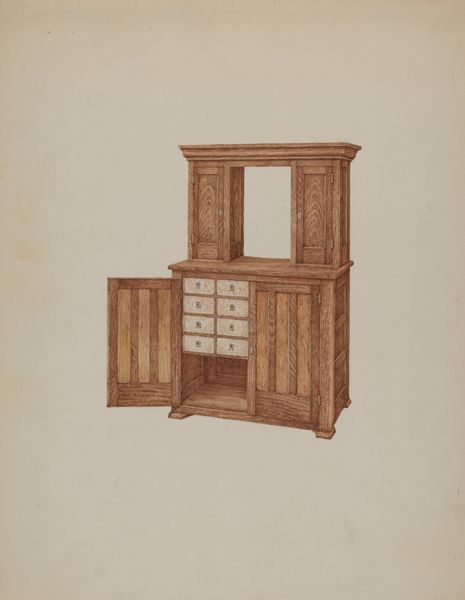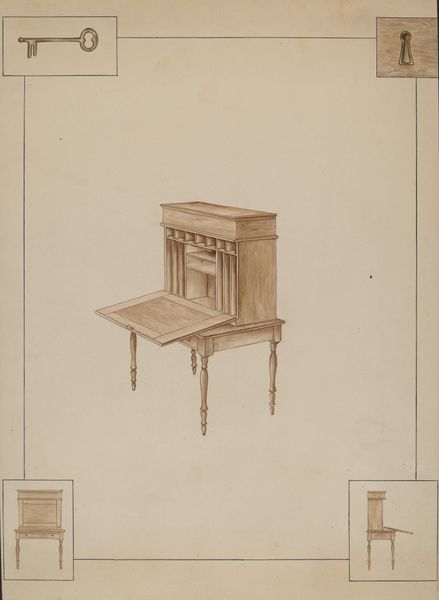
drawing, print, paper, ink
#
drawing
# print
#
paper
#
ink
#
genre-painting
#
decorative-art
Dimensions: height 358 mm, width 274 mm
Copyright: Rijks Museum: Open Domain
Curator: This image, created sometime between 1832 and 1877, presents us with an intricate vision of what the artist refers to as a “Bureau met boekenkast”—a desk with a bookcase. It’s unsigned, so the artist remains anonymous. What strikes you most about this piece? Editor: My first impression? Intimacy. There’s a sense of enclosed, personal space created by all those nooks and crannies. It's as if it invites secrets, doesn’t it? Like a miniature world for papers, thoughts, and perhaps a hidden sweet or two. Curator: It’s interesting that you mention secrets. The form certainly has a historical symbolism. Consider how many official documents, love letters, and financial ledgers such a piece of furniture might have safeguarded through time. Think of this not just as furniture, but as the silent witness of human affairs! Editor: And look at all those drawers—perfect rectangles just BEGGING to be filled and organized. There is such care put in showing depth using gradients of ink. In the center of the desk area, one can almost see sunlight playing on the polished surface, a subtle suggestion of warmth. Is it me, or does this have the charm of a miniature architectural model? Curator: Absolutely! The visual vocabulary has echoes of neoclassical architecture – that elegant, almost temple-like presence achieved through simple forms and balanced composition. Beyond its artistic or decorative function, there’s a strong functional aspect, a design suggesting utility but in this case one of great artistry. Editor: I like to imagine this piece, realized in the real world, not just in the lines of this artwork. Made of heavy dark wood, mahogany, I'm thinking, solid, anchored to the floor, yet at the same time so full of potential for inspiration and new creations. There is a distinct sense of domesticity conveyed. It has quite the charm for what seems like decorative art! Curator: The artist, though unknown to us, leaves behind not just a portrayal of furniture, but really, a window into a bygone era where handcrafted artistry was at the heart of even everyday items. It makes us appreciate the sheer dedication to craft in a time before mass production. Editor: Right, you said it well. It’s more than just furniture, it is a vessel of memory, imagination, and countless untold stories!
Comments
No comments
Be the first to comment and join the conversation on the ultimate creative platform.
